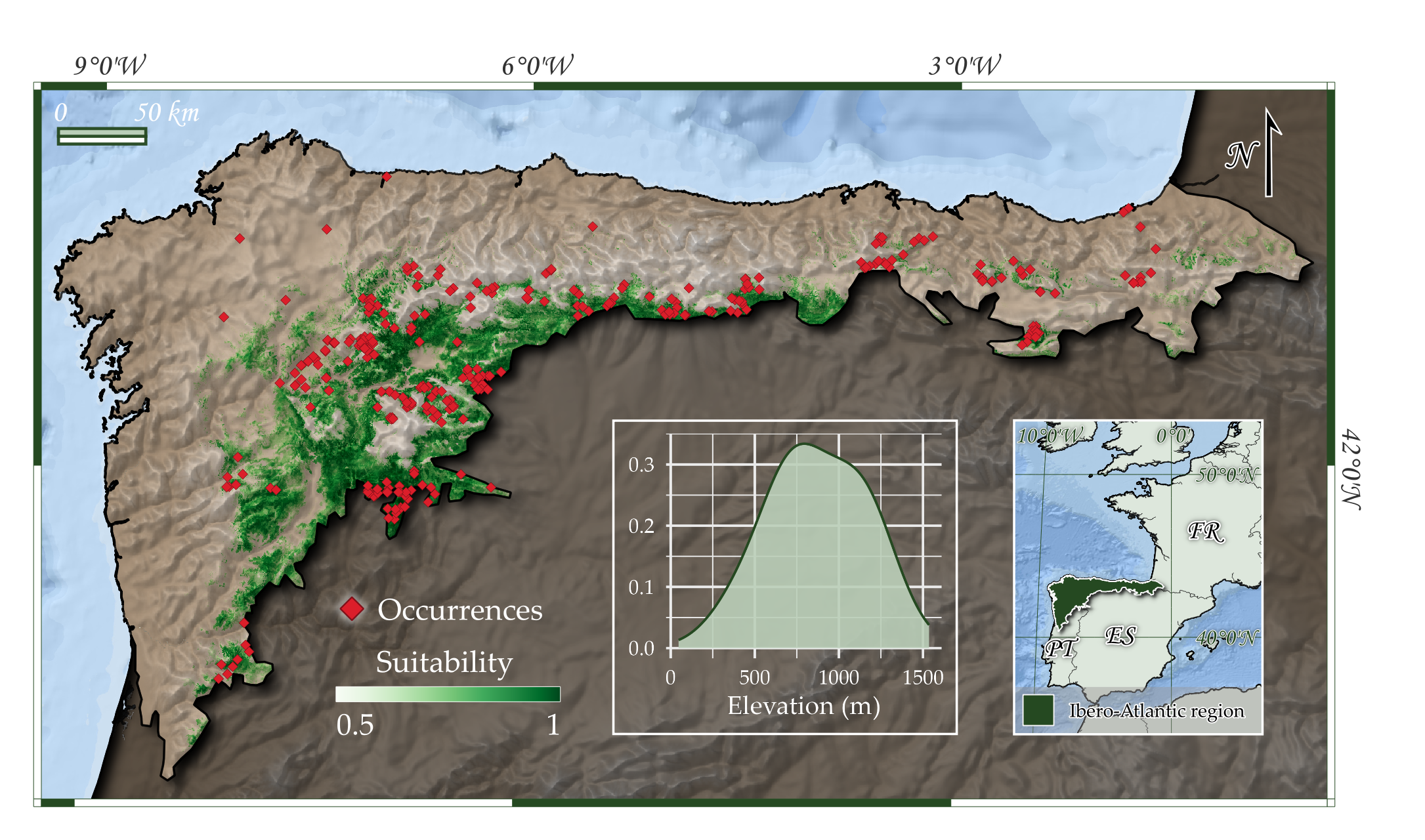T19A Quercus pyrenaica forest
Description
An acidophilous analogue of T197, these broadleaved deciduous forests outcompete T21z where summer drought is less severe and snowfalls might be detrimental to broadleaved evergreens, functioning as zonal forests in much of SE Galicia and NE Portugal, as well as in the southern foothils of the Cantabrian Mountains. In the northern territories they occur scattered in south-facing slopes and even in sandy coastal areas, as well as, more widespread, in areas of SW Asturias particularly sheltered from the oceanic summer clouds, replacing T1Bx in the lowlands and T1By in the mountains. The dominant, defining species, Quercus pyrenaica, is a late-leafer with deeply lobed, whitish leaves, hence resistant to late frosts and able to dissipate solar heat with modest transpiration (reducing potential photosynthetic output but increasing survival). Arguably an adaptation to relatively frequent wildfires throughout an evolutionary history unfold under wet submediterranean climates, Quercus pyrenaica sprouts vigorously from root when burnt or coppiced, resulting in dense shrubby formations recognised by EUNIS as S516 (“Deciduous Quercus matorral).
Floristic Composition
Frequent species
Indicator species
Phytosociology
- Genisto falcatae-Quercetum pyrenaicae
- Holco mollis-Quercetum pyrenaicae
- Linario triornithophorae-Quercetum pyrenaicae
- Melampyro pratensis-Quercetum pyrenaicae
Regional distribution
